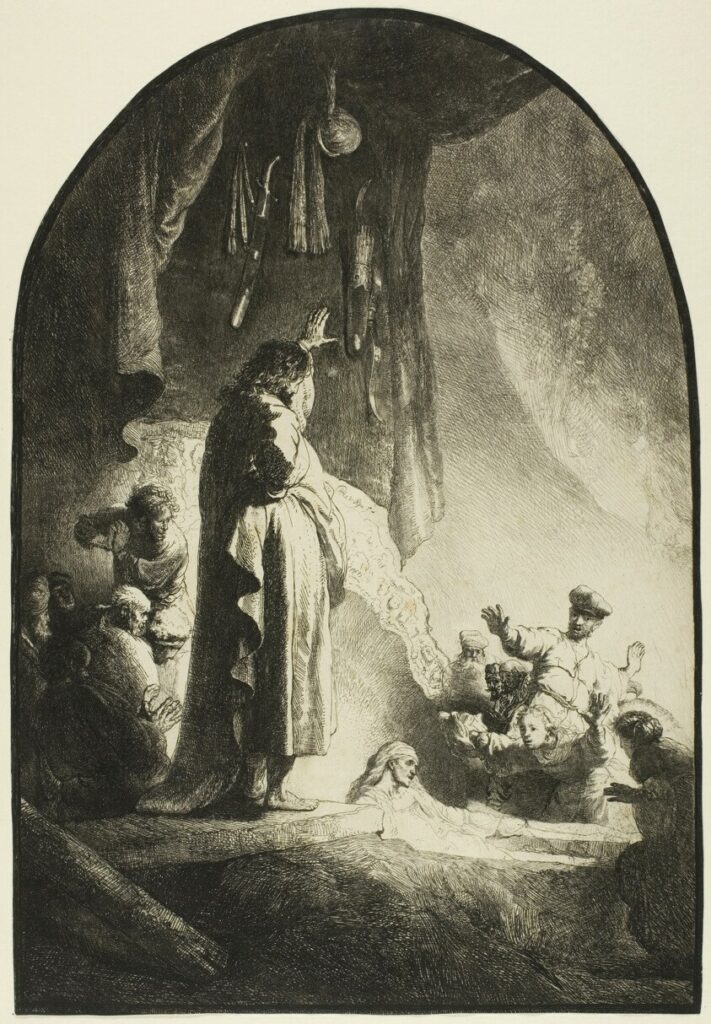“I am the Resurrection and the Life”
“The Raising of Lazarus” – a Rembrandt van Rijn etching from the year 1632 made an overwhelming impression on me from the moment I first saw it in the book that I found in the basement of my parents’ house. In the artist’s depiction of this famous scene, Lazarus is barely visible as his mind and soul seem only with difficulty to follow his body as it moves towards life. The dominating figure in the etching is Jesus standing over the grave with an extended hand. It is an expression of the power of Jesus as the Lord of life in his act of love and mercy. The people around him are not looking at Jesus but at Lazarus. This is not a surprise: if the blind man healed by Jesus from the story we read last Sunday professed: “It is unheard of that anyone ever opened the eyes of a person born blind.” (John 9:31), what about an unheard-of miracle of raising someone from the dead?

Actually, this miracle was not a miracle but a sign – if we follow the theology of St. John. For John, Jesus’ miracles – and his works in general – are “signs”. These actions give us the intimations of the true identity of the one who does them, and as a consequence, they aim to enkindle faith. For this reason, this story as well as the one from last Sunday (the healing of the blind man) and also others, has been presented from ancient Christian times to catechumens – those who wanted to discover who Jesus is in preparation for their baptism. The rising of Lazarus is the last “sign”, out of seven in John’s Gospel, that Jesus works in order to manifest the glory of the Father and announce his personal glorification at his passover, his passion and resurrection. The resurrection is – as some indicate – the ultimate, the greatest and the final “sign”.
What is the difference between a miracle and a sign? A sign is a miracle with meaning, pointing at something, and as was mentioned above, intended for enkindling faith. The sign has to be recognized and accepted. As we heard in today’s story of Lazarus, “many of the Jews who had come to Mary [Lazarus’s sister] and seen what he had done began to believe in him.” However, in the next passage we also read about something unbelievable: “some of them went to the Pharisees and told them what Jesus had done” and plotted against Jesus and Lazarus, even though they just witnessed a miracle. They did not recognize this amazing miracle as a sign.
This is a strong warning for us that even the greatest sign from God could be disregarded, wasted, or even openly rejected.
The “sign” of the raising of Lazarus prepares us to understand well the meaning of the Lord’s passion. Jesus is the source of life, not only of this earthly one, but of eternal life as well. The story leads us to the dialogue with Martha, the other sister of Lazarus, and to the culminating point of the revelation, which confers meaning of the sign: “I am the Resurrection and the Life”. This declaration of Jesus is followed by the ever-sounding question, “Do you believe this?”
Do you believe this?
Fr. Mark Jurzyk
